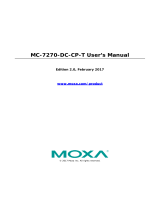4
INTRODUCTION
You have made an excellent choice in selecting the Dometic Absorption Refrigerator.
We are sure that you will be fully satisfied with your new appliance in all respects.
The appliance, which works silently, meets high quality standards and guarantees
the efficient utilisation of resources and energy throughout its entire life cycle, during
manufacture, in use and when being disposed of.
Before you start to use the appliance, please read the installation and operating
instructions carefully.
The refrigerator is designed for installation in leisure vehicles such as caravans or
motorcaravans. The appliance has been certified for this application in accordance with
EU Gas Directive 90/396/EEC.
FOR YOUR SAFETY
Warning and safety notices
Never use a naked flame to check the appliance for leaks.
Protect children!
When disposing of the refrigerator, remove all refrigerator doors and leave the
storage rack in the refrigerator. This will prevent accidental locking in or suffocation.
If you smell gas:
- close the locking tap of the gas supply and the valve on the cylinder.
- open the windows and leave the room.
- do not switch on anything electrical.
- extinguish naked flames.
Never open the cooling unit; it is under high pressure.
Work on the gas, flue system and electrical components must only be
carried out by qualified service personnel.
It is imperative that the operating pressure should correspond to the data given on
the model plate of the appliance.
Compare the operating pressure data given on the model plate with the data on the
pressure monitor of the liquid gas cylinder.
Liquid gas cylinders may only be changed by qualified personnel.
Gas operation of the appliance is not permitted while travelling on ferries.
Covers ensure electrical safety and must only be removed using a tool.
The appliance must not be exposed to rain.
The refrigerator is not suitable for the proper storage of medications.
Coolant
Ammonia is used as a coolant.
This is a natural compound also used in household cleaning agents (1 litre of
Salmiak cleaner contains up to 200g of ammonia - about twice as much as is used in
the refrigerator). Sodium chromate is used for corrosion protection (1.8% of the
solvent).
In the event of leakage (easily identifiable from the unpleasant odour):
switch off the appliance.
air the room thoroughly.
inform the authorised Customer Service department.
11..00
22..00
2.1
2.2
Danger Attention




















